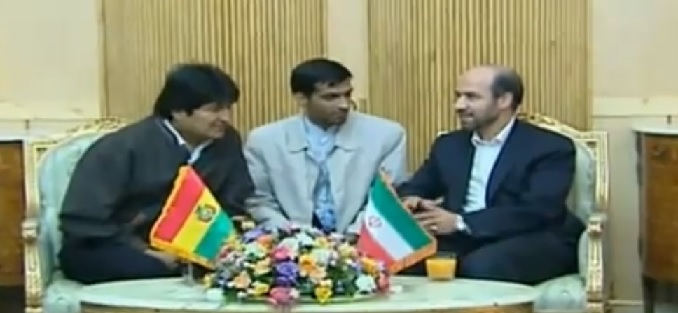Iran is deepening its outreach to Bolivia, one of several countries in the Western hemisphere that Iran seems set on establishing as footholds. An Iranian news agency this week celebrated recent efforts:
In a Monday meeting with his Bolivian counterpart Evo Morales on the sidelines of the summit of Gas Exporting Countries Forum (GECF) in Russia, President Ahmadinejad underlined the significance of solidarity among independent nations and governments against “bullying powers”. “The development and consolidation of ties with independent nations, in particular Latin American ones, is among the definite and strategic policies of the Islamic Republic of Iran,” Ahmadinejad said. Iran and Bolivia enjoy brotherly relations and follow great objectives, which require them to further enhance and strengthen their ties, he added.
Bolivia is not unique. A recent State Department report outlined Iranian efforts across South America. Terrorism expert Matthew Levitt emphasized that the report not only documented Iran’s continuing efforts “to expand its presence and bilateral relationships with countries like Cuba, Ecuador, Nicaragua and Venezuela,” but also the infiltration of “a network of intelligence agents specifically tasked with sponsoring and executing terrorist attacks in the Western Hemisphere.”
Iran’s South American infiltration is critical to Tehran’s efforts to launch terrorist attacks on U.S. soil:
In Latin America, Iran’s strategy ran on parallel tracks: Argentina in the south, Guyana in the north and several countries in between. Perhaps most surprising to U.S. readers is that Iran’s Guyana cell planned and very nearly executed the 2007 plot to blow up natural-gas lines under JFK Airport in New York City, bragging it would surpass 9/11 in devastation. While Iran’s involvement in the funding and planning of the attack are documented in court filings in the case, in which two people were convicted and sentenced to life in prison, it was barely mentioned either by U.S. prosecutors or the media covering the trial.
The activities of Iran’s different government agencies, from the ministries of foreign affairs to its intelligence structure to its cultural centers and mosques all play a role in exporting the Iranian revolution. Nisman lays out the role of each part of the government, as well as Hezbollah, acting as Iran’s proxy.
[Photo: Sherlock72 / YouTube]




